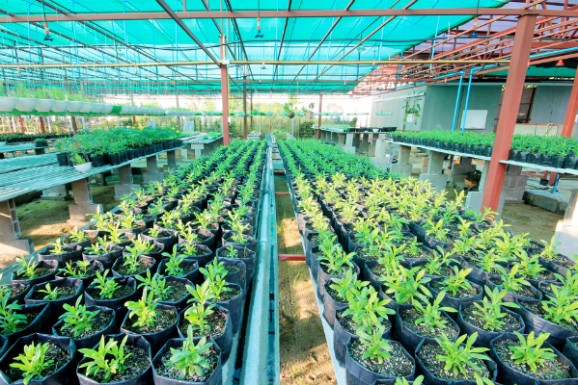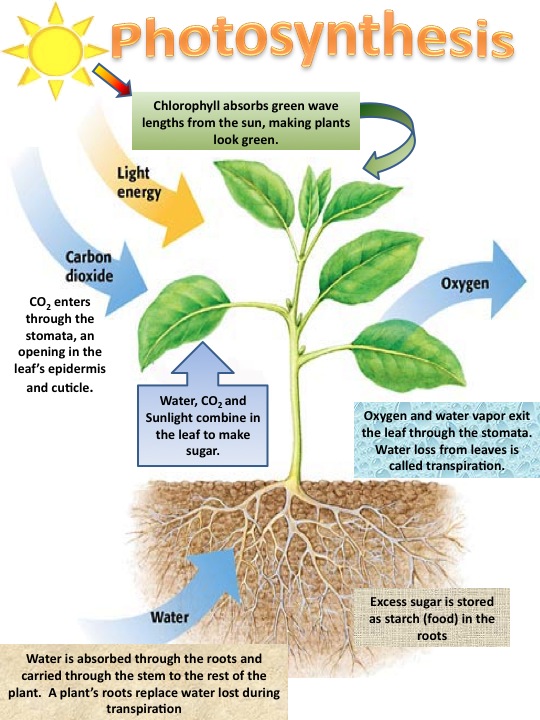Scientists May Have Figured Out How To Speed Up Photosynthesis
This article is more than 2 years old
 Most of us learned about photosynthesis way back in grade school science, but in case you were absent that day, or busy etching your initials into the side of your desk, photosynthesis is plants’ process of turning sunlight (and water and air) into energy. It’s pretty much the most amazing and important thing plants do, and of course, those of us who enjoy breathing certainly appreciate the conversion of carbon dioxide into oxygen. Now it seems as though humans can do more than appreciate this process—according to a new study published in Nature, humans may be able to speed up photosynthesis.
Most of us learned about photosynthesis way back in grade school science, but in case you were absent that day, or busy etching your initials into the side of your desk, photosynthesis is plants’ process of turning sunlight (and water and air) into energy. It’s pretty much the most amazing and important thing plants do, and of course, those of us who enjoy breathing certainly appreciate the conversion of carbon dioxide into oxygen. Now it seems as though humans can do more than appreciate this process—according to a new study published in Nature, humans may be able to speed up photosynthesis.
The study, led by a Cornell University scientist, revolves around a protein enzyme called Rubisco. Rubisco’s job is to convert carbon dioxide into sugar, and comprises roughly half of all proteins contained in leaves—there may even be more Rubisco around than any other protein on the planet. But that’s because it is actually not that great at its job. It’s not very efficient, and it performs the conversion slowly and in relatively small quantities. So, just like with anything else that lacks efficiency, the question scientists raised in the study was how to boost it.
 Scientists have tried before—most believe that boosting Rubisco’s output might result in as much as a 60% increase in staple crops, as well as reduce the need for fertilizers. But no attempts to make it more efficient have succeeded—until now. Scientists used Synechococcus elongatus, an algae-like cyanobacteria found in water that is particularly adept at photosynthesizing to the point that its blooms can kill other aqueous organisms. They inserted this Rubisco gene into a tobacco plant’s chloroplast genome and found that, indeed, the plant photosynthesized faster than other tobacco plants.
Scientists have tried before—most believe that boosting Rubisco’s output might result in as much as a 60% increase in staple crops, as well as reduce the need for fertilizers. But no attempts to make it more efficient have succeeded—until now. Scientists used Synechococcus elongatus, an algae-like cyanobacteria found in water that is particularly adept at photosynthesizing to the point that its blooms can kill other aqueous organisms. They inserted this Rubisco gene into a tobacco plant’s chloroplast genome and found that, indeed, the plant photosynthesized faster than other tobacco plants.
This is the first time a cyanobacterial enzyme has been genetically engineered into a plant that has then used it for photosynthesis. Scientists believe the experiment worked because they added two additional bacteria into the modified plants, both of which strengthen Rubisco. Theoretically, incorporating the new form could yield faster and increased food production.
Additional research and tinkering will have to be done first, though. The new Rubisco could still be more efficient—it interacts with oxygen instead of carbon dioxide, which could be changed in a high carbon dioxide lab, but isn’t feasible in the long run. The scientists will soon try to integrate the new Rubisco into a new batch of tobacco plants that generate bacterial micro-compartments that contain carbon-related enzymes. This is one small step for man, and potentially one giant leap for GMOs.












